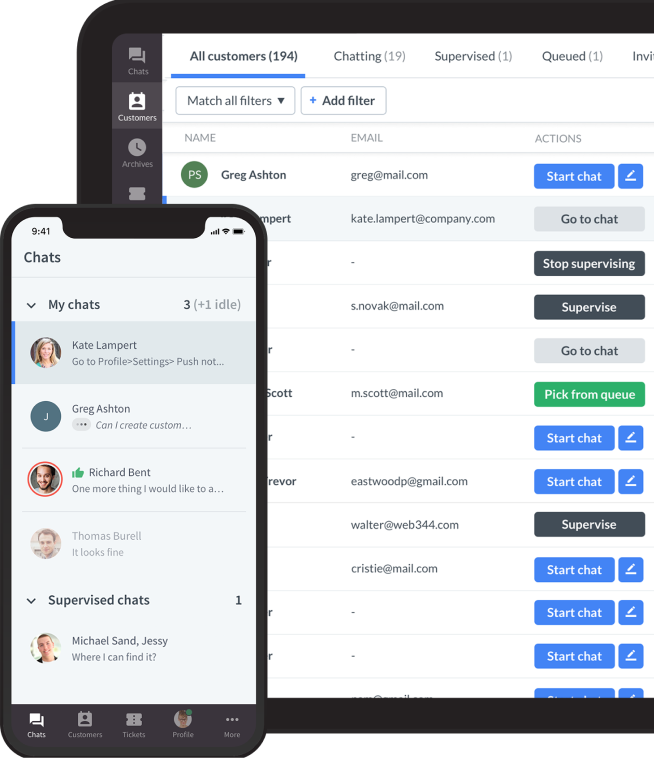
Imagine you’re browsing an online store and get stuck. Maybe you have a question about shipping, or a promo code isn’t working. You spot a chat icon, open it, and within moments, a friendly support agent is guiding you through the issue. It's fast, helpful, and surprisingly personal. That’s the magic of live chat — when done right.
But offering live chat isn’t enough. To truly wow customers and keep them coming back, your support team needs to master both the technical tools and the human touch. From speed and tone to proactive help and emotional intelligence, small details can make a big difference in how customers feel about your brand.
Want more advice on delivering exceptional customer service? Check out our live chat etiquette tips for agents and managers!
This article compiles 30 tips and tricks to help you deliver live chat support that’s not just responsive but exceptional.
The importance of accumulating tips and tricks in chat support
Tips and tricks are not just shortcuts — they're small, repeatable practices that compound into major improvements in efficiency, customer satisfaction, and support team confidence. In a channel as immediate and human-facing as live chat, these seemingly small improvements can make or break a brand’s reputation. Here’s why they matter:
Turn good support into great support
At its core, live chat support is about answering customer questions, but excellence lies in the delivery. Tips on tone, empathy, and phrasing help all your agents turn functional conversations into memorable, positive experiences. A simple trick like using the customer’s name or expressing empathy can shift the tone from transactional to relational, creating a support experience that actually feels good.
Boost efficiency without sacrificing personalization
Speed is essential in live chat support, but no one wants to feel like they're talking to a robot. Tips and tricks for using canned responses creatively, combining them with personalization, and knowing when to switch gears into more human language help customer support teams serve more customers quickly without coming off as cold or generic.
Example: Instead of sending a generic "We'll get back to you soon,"Try: "Hi Amanda! I'm checking into that now — should just take a minute or two." This blends speed with warmth.
Improve customer satisfaction (CSAT) scores
Live chat is often the customer’s first real interaction with your brand. Every tip that enhances the experience, whether it's about response time, tone matching, setting expectations, or resolving issues efficiently, directly feeds into a better customer experience. When customers feel heard and helped, CSAT scores rise, and with them, brand loyalty and retention.
Equip new agents faster
Live chat tricks serve as a cheat code for onboarding. New agents can tap into battle-tested phrases, escalation strategies, and response templates to sound confident early on. Instead of relying on trial and error, they build good habits right away, helping them ramp up faster and feel more secure in handling real-time conversations.
Minimize escalations and mistakes
Tips like confirming understanding, breaking complex instructions into steps, or flagging tone shifts early in live chat conversations help customer service agents catch and correct issues before they snowball. This reduces the need for escalations to senior staff and prevents small misunderstandings from turning into customer frustrations or worse, churn.
Encourage continuous improvement
A culture of sharing tips and reviewing what works (and what doesn’t) turns live chat into a learning machine. Customer support teams that regularly swap insights from real customer interactions stay sharp, evolve with customer expectations, and are better prepared for new scenarios. These best practices don’t stay static — they grow over time, helping everyone raise the bar.
30 expert-level tips and tricks to elevate chat support
Behind the scenes, live chat software is designed to be efficient and scalable. Live chat support agents can manage several chats at once, often with the help of smart tools like canned responses and chat history. Some systems use AI to answer simple questions automatically before escalating to a human. When done well, it saves everyone time and leaves customers happier.
Below is a list of actionable tips and tricks for managing expectations and providing support that encourages customers to chat, shop, and come back to your business.
Speed and responsiveness

In live chat, time is the currency. Customers' problems need answers fast, and every second you delay can impact satisfaction, conversion rates, and brand trust. The following tips help you master responsiveness while still keeping quality high:
Respond quickly
In live chat conversations, customers expect a near-instant reply — often within 30 seconds. Delays make customers feel ignored and can lead to higher abandonment rates.
Implementation tips:
- Use auto-greetings like "Hi there! I'm here if you have any questions." to acknowledge presence immediately. Features like AI text enhancements can speed up the process.
- Set internal benchmarks for response times (for example, first response under 30 seconds, resolution within 10 minutes).
- Use routing rules or chatbots to triage and guide users quickly, even before a human joins.
Use typing indicators strategically
Live chat lacks body language, so customers rely on visual cues to know you’re still there. Typing indicators in the chat window reassure users that an answer is coming, reducing anxiety and impatience.
Implementation tips:
- Don’t go silent, let the customer see that you’re typing, even if it’s just a short check-in.
- If the reply will take longer to type, send a quick interim message: "Just a moment while I find that info for you."
- Avoid typing long blocks silently; it’s better to break them up into small, progressive messages. Features like canned responses can help you manage longer and more complex responses. They can also help deliver responses faster.
Don’t multitask excessively
While live chat solutions allow for handling multiple customers at once, juggling too many conversations can lead to dropped messages, missed context, and a robotic tone, all of which damage trust.
Implementation tips:
- Use intelligent chat tools that limit or prioritize chat volume per agent.
- Maintain cheat sheets and canned responses to reduce response time across chats.
- If your queue gets overwhelmed, use a queue message like: "We're a bit busy, but we'll be with you in under 2 minutes. Thanks for your patience!"
Set clear expectations
When customers don’t know how long something will take, they assume the worst. Keeping customer informed manages their patience and builds trust, even if the wait is the same.
Implementation tips:
- If researching a solution, say: "This will take about 2–3 minutes to check — thank you for holding."
- Always update if timelines shift: "Thanks for waiting — I'm still digging into this. Just another minute or two!"
- Use status messages proactively during longer interactions so the customer never wonders if you disappeared. Features like the AI Search bar can help you search the live chat software for answers. You can reach all the corners from a single place in a timely manner.
Getting these fundamentals right improves the live chat experience, customer loyalty, brand perception, and your team's efficiency. Customers remember how fast and attentively you helped them, especially when time is tight or the issue is urgent.
Tone and personalization

While speed gets customers’ attention, tone and personalization are what keep them engaged and satisfied. A helpful answer delivered with the wrong tone — or without any personal connection — can still feel cold or dismissive. This section focuses on how to make your chat interactions warm, human, and authentic.
Personalize the experience
Customers want to feel like real people are helping them, not just ticking boxes. A personalized touch builds trust and loyalty.
Implementation tips:
- Use the customer’s name throughout the conversation, not just at the beginning. Features like a pre-chat survey can help you gather the information you need before the chat starts. You can use it and not ask the customer again during the chat.
- Reference their location, order, or past interaction if the system provides that context.
- Instead of generic messages, tailor language to their specific issue: "Thanks for reaching out about your recent order — let's take a look at that tracking number."
Use a friendly, human tone
Customers mirror your tone. A warm, conversational style often diffuses tension and sets a cooperative mood.
Implementation tips:
- Use contractions ("we're," "you'll") for a natural tone.
- Add polite expressions: "Absolutely!", "Great question!", or "Happy to help!"
- Avoid overly formal or robotic responses like: "Your query has been received and will be processed."Try instead: "Got it! Let me check that out for you."
Mirror the customer's language
People respond positively to familiar communication styles. Mirroring helps you build rapport more quickly.
Implementation tips:
- If they’re formal, match it: "I'd be happy to assist you with that today."
- If they’re casual, go with: "Sure thing! Let’s figure this out."
- Match their use of emojis or slang carefully — don’t overdo it or force it if it’s not authentic to your brand. Some live chat software enables sentiment analysis. That can help you match the customer's tone and ensure they feel comfortable while chatting.
Use names throughout the conversation
Names build connection. Using them consistently reminds the customer they’re speaking to a person who sees them as an individual.
Implementation tips:
- Start and end with their name: "Hi Olivia! Let's take a look…" → "Hope that helped, Olivia!"
- Use their name when summarizing or asking clarifying questions to reinforce attention:"Just to confirm, Olivia, you'd like to update the shipping address, right?"
Recognize returning customers
Acknowledging returning customers shows attentiveness and appreciation. It also avoids making them repeat themselves.
Implementation tips:
- Use CRM or live chat tools that flag repeat visitors or previous tickets. Features like chat history can help you get up to date. You can also use an AI-powered chat summary to further accelerate the process.
- Start with: "Welcome back! I see you spoke with us about this last week — let's pick up where we left off."
- Offer quicker resolution by referencing their previous issue or preferred approach.
Match their pace
Some customers want quick answers and minimal small talk; others need step-by-step explanations. Matching pace enables you to support customers in a genuinely helpful way and ensures a positive tone throughout the whole chat support process.
Implementation tips:
- If a user types brief, direct messages, keep your replies short and structured.
- If they ask a lot of details, slow down and guide them carefully, even if it takes a few minutes more of your time.
- Pay attention to pauses — some customers need time to process, especially in complex issues.
Tone and personalization transform functional support into a relationship-building moment. When customers feel acknowledged, heard, and understood, they’re more likely to trust your brand, buy again, and share positive customer feedback.
Clarity and communication

Clarity should never be sacrificed for speed in customer interactions. In a channel with no facial expressions or voice tone, how you write becomes everything. This section focuses on ensuring your messages are structured, easy to follow, and confidence-building, even when the topic is complex.
Keep language simple and clear
Live chat users often have multiple tasks — like shopping, working, or commuting — at once. If your response is unclear or full of jargon, they’ll either get frustrated or need to ask follow-up questions, which wastes time.
Implementation tips:
- Avoid technical jargon unless the customer uses it first. Instead of: "We'll process the authorization through our payment gateway."Say: "We'll send your payment through now — it should go through in a few seconds."
- Break complex replies into steps or bullet points, especially for troubleshooting. You can use canned responses to prepare more complex responses. When a longer response is ready to use, you can spare a few seconds to simplify it if the customer needs it.
- Use everyday words. For example, use "cancel" instead of "terminate" or "verify" instead of "authenticate."
Confirm understanding
Misunderstandings are common in text-based communication. Confirming what the customer meant not only prevents errors but also makes them feel heard.
Implementation tips:
- Restate the issue in your own words: "Just to confirm, you're trying to update the delivery address for your last order, right?"
- When offering instructions, ask a quick check-in: "Did that make sense, or would you like me to walk you through it step by step?"
- After resolving a request, verify resolution: "Was that what you were looking for?"
Summarize before closing
A summary reinforces what’s been resolved and prevents post-chat confusion. It also shows professionalism and attention to detail.
Implementation tips:
- Use a brief recap before ending: "So just to summarize, we've updated your email address and sent a new invoice to the correct one." You can use features like AI-powered chat summaries when the chat is long and you need to resolve several issues. It'll ensure you do not forget anything.
- Offer a call to action or follow-up option: "Let me know if you don't receive that email in the next 10 minutes."
Always end on a positive note
The end of the conversation leaves a lasting impression. A thoughtful closing line helps the customer feel appreciated and confident in the support they received.
Implementation tips:
- Ask if they need anything else: "Is there anything else I can help with today?"
- Thank them: "Thanks so much for reaching out — we really appreciate you!"
- Offer help again in the future: "Feel free to chat with us anytime."
Create a 'hold message' template
In chat, even a 30-second silence can feel like a long time. When you need time to look something up, leaving a placeholder message shows that you’re engaged, not ignoring them.
Implementation tips:
- Create reusable hold messages, like: "This will take a couple of minutes — thank you for your patience!" or "I'm checking with a colleague to confirm that. Hang tight!"
- If it’s taking longer than expected, check in again before they ask. Features like canned responses and AI-powered response suggestions can help you speed up the process.
Fast answers are great, but they’re only effective if customers understand and trust what you’ve said. Clarity reduces repeat contacts, boosts satisfaction, and shows your brand is professional and thoughtful.
Proactive and visual support
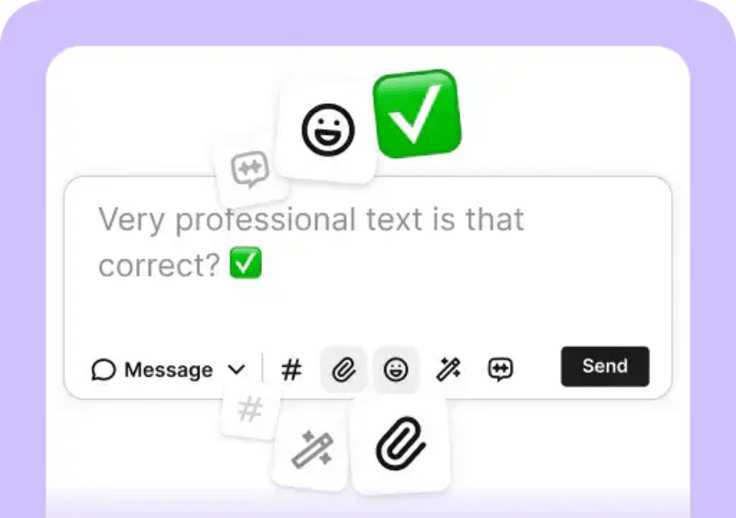
Live chat is more than responding — it’s anticipating, guiding, and showing. Proactive support increases engagement and reduces cart abandonment, while visual support improves clarity and resolution speed. These tips help you use both strategies effectively.
Proactively offer help
Many customers hesitate to reach out, even when they’re confused or need assistance. Proactively offering help based on user behavior can prevent frustration before it builds and increase conversions.
Implementation tips:
- Set up automated chat triggers for common pain points:"Need help choosing the right plan?" after 30 seconds on a pricing page."Have questions about shipping?" when someone hovers over the checkout screen.
- Use behavior-based targeting to identify high-value moments (for example, cart inactivity, error pages, return visits).
- Keep the tone helpful and non-intrusive.
Share screenshots or links
Visuals speed up comprehension, especially when explaining technical steps, website navigation, or where to click. Customers are more likely to follow instructions when they can see what to do.
Implementation tips:
- Use annotated screenshots or GIFs to walk users through interfaces. Often, chat windows allow customers to send files as well. Use these features to better understand what the customer sees.
- Share relevant knowledge base links with a personal explanation: "Here's a quick guide with screenshots — it starts at Step 3, where your issue begins."
- If you’re explaining a process (for instance, "How to change billing info"), include a short step list plus a visual for maximum clarity.
Offer alternative contact methods
Not every issue is best solved via live chat. When things get too complex or emotionally charged, knowing when to switch communication channels can save time and improve satisfaction.
Implementation tips:
- Suggest escalating to phone support or creating a help desk ticket when there’s a sensitive issue (for example, a billing dispute), the customer is showing signs of frustration, multiple back-and-forth messages aren’t moving things forward.
- Phrase it as a helpful suggestion: "This might be easier to sort out in a quick call. Would you like me to schedule one or give you a direct number?"
Proactive outreach reduces friction before it starts, while visual aids make solutions easier to understand and follow. Together, they lower customer effort, accelerate resolution, and create a more guided, confident customer experience.
Empathy and emotional intelligence
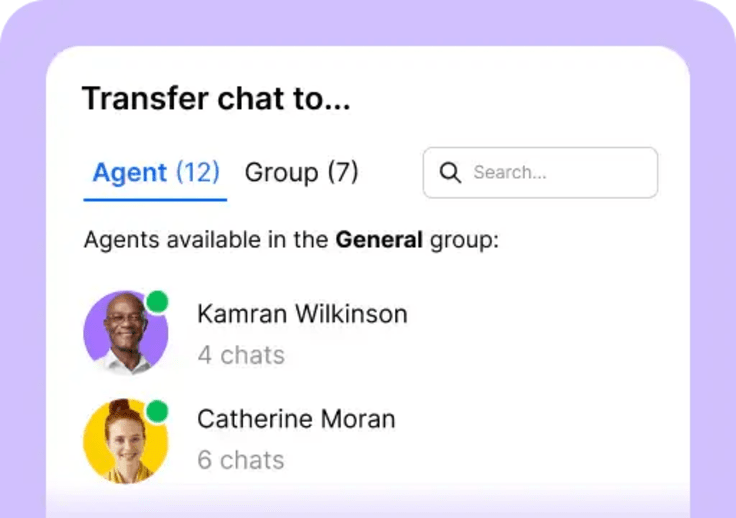
Empathy and emotional intelligence help agents defuse tension, build trust, and ensure customers feel heard, respected, and supported. These techniques are the key to transforming difficult moments into lasting loyalty.
De-escalate with empathy
When a customer is angry, defensive, or confused, facts alone won’t calm them down. Emotional intelligence helps you meet them where they are emotionally, reducing friction and moving toward a solution.
Implementation tips:
- Lead with acknowledgment: "I completely understand how frustrating that must be."
- Avoid defensiveness. Even if the customer is wrong, start by validating the feeling, then offer clarification. You can use tags to acknowledge bad emotions during the chat support. It'll let you ar other agents know how to approach the customer if they decide to come back in the future.
- Use softeners: "Let's figure this out together," or "I know this isn't ideal — let's see what we can do."
Validate and reassure
Sometimes, customers just need to know they’ve been heard and that they’re in good hands. A little reassurance can make even complex or delayed resolutions feel emotionally satisfying.
Implementation tips:
- Reassure them that they took the right action: "I'm glad you reached out — this is exactly the kind of thing we’re here for."
- Provide status updates even if there’s no new info: "I'm still with you — just waiting on confirmation from our billing team."
- Let them know you’re on their side: "We'll get this sorted out — I'll make sure you’re taken care of."
Admit when you're not sure
Customers value honesty over guesswork. Trying to fake certainty can erode customer engagement if the answer turns out to be wrong.
Implementation tips:
- Be honest, but proactive: "That's a great question. I don't want to give you the wrong info, so let me double-check with our tech team."
- Set a follow-up plan: "I'll send you an update within the hour, even if we're still waiting."
- Use team collaboration tools or escalation processes to get answers fast and follow through promptly. Live chat agents can simply ask managers to give them a hand through a private note or transfer the chat to them directly.
Follow up after a chat
A quick follow-up after a tough or unresolved customer inquiry during a live chat conversation shows continued care and gives the customer closure. It can also be an opportunity to recover from a rocky interaction.
Implementation tips:
- Use email or in-app messaging to check in: "Just following up on our chat earlier — everything working OK now?" Many of the help desk providers offer automated follow-ups. It shows you can support customers also in other communication channels, and the customer service agents don't need to worry that they forget to send a check-in message.
- If something was escalated or promised, make sure to close the loop with confirmation or the final solution.
- Even a 2-sentence follow-up builds goodwill: "Thanks again for your patience earlier — I really appreciated it."
Customers don’t just want answers — they want to feel understood, respected, and cared for. Emotional intelligence allows agents to connect in ways that leave lasting impressions, even when things start off difficult.
Efficiency and tools
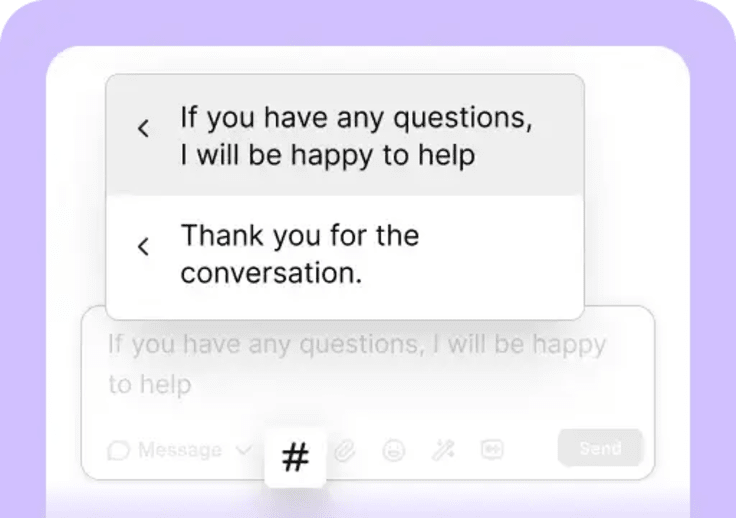
Live chat teams often balance speed, accuracy, and tone while handling multiple conversations at once. The right tools and workflows streamline the immediate response process, helping live chat agents stay sharp and productive.
Leverage canned responses wisely
Canned responses save time, but if overused or used robotically, they can make your brand feel cold or generic. The trick is blending speed with personalization.
Implementation tips:
- Create templates for high-volume questions (like shipping, returns, password resets).
- Always customize with the customer’s name or case detail: "Hi Marcus! Thanks for reaching out about your invoice — I've pulled it up here."
- Regularly review and refresh canned messages to match tone updates or new policies.
Use emojis sparingly
A well-placed emoji can make your response feel warm and human, but overdoing it can damage professionalism, especially in sensitive situations.
Implementation tips:
- Use emojis to add friendliness, not replace words. "Glad to help! 😊" feels warm; "👍👍✅" might feel lazy or dismissive.
- Be aware of context - skip emojis when discussing billing errors, complaints, or technical outages.
- Follow brand voice guidelines — some brands allow emojis freely, others keep a formal tone.
Use tags and notes for team awareness
Internal tags and notes help agents share context across shifts or departments, avoiding repeated questions and redundant troubleshooting.
Implementation tips:
- To flag conversations, use tags like "VIP customer," "refund pending," or "follow-up needed."
- Write short internal notes summarizing key context: "Customer was frustrated with the delay, but OK after the refund was issued — might need confirmation."
- Ensure visibility across agents so anyone jumping in has the full picture immediately.
Know your product inside out
Even the friendliest agent can lose credibility if they don’t understand the product. Deep product knowledge leads to faster resolutions and fewer escalations.
Implementation tips:
- Provide structured product training, especially after feature releases or policy changes.
- Use internal knowledge bases or cheat sheets for common edge cases or troubleshooting flows.
- Encourage agents to test the product themselves to better understand the customer perspective.
Analyze chat transcripts
Live chat is a goldmine for insights into customer behavior, support gaps, and agent performance. Regular reviews help teams identify patterns, improve scripts, and share best practices.
Implementation tips:
- Review transcripts weekly or monthly for quality assurance. Focus on both successes and misses.
- Flag chats where customers were especially satisfied — or unsatisfied — and debrief as a team.
- Use AI-based tools or filters to surface conversations by keyword, sentiment, or resolution outcome.
With thoughtful automation, strong systems, and real-time collaboration tools, your team can spend less time digging for answers and more time connecting with customers. The result? Higher satisfaction, smoother workflows, and empowered agents.
Improvement and feedback
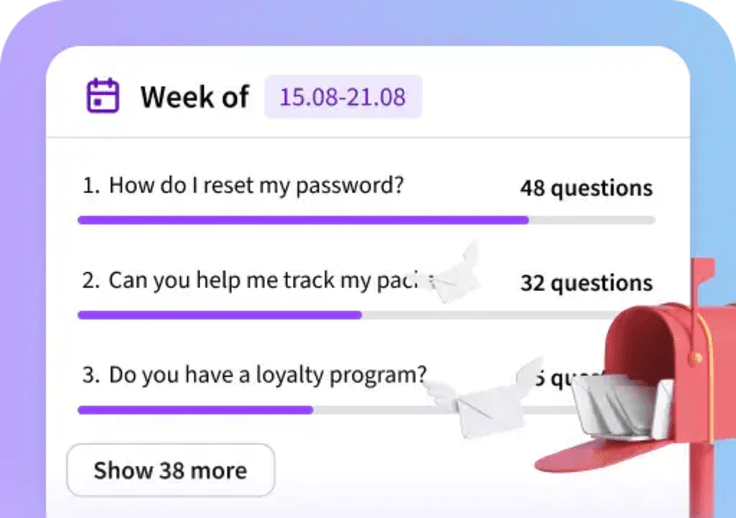
The best support teams treat every conversation as an opportunity to learn, adapt, and improve. By collecting feedback, monitoring performance, and fostering a growth mindset, you can consistently deliver better experiences while keeping your team sharp and aligned.
Offer feedback channels
You can’t improve what you don’t measure. Offering customers a simple way to rate their experience or leave comments helps you understand what’s working and what’s not.
Implementation tips:
- Use post-chat surveys with a customer satisfaction (CSAT) score: "How would you rate this conversation?"
- Include an optional open-text field so customers can explain their rating.
- Review feedback weekly to identify common praise or pain points, and use it to guide coaching.
Bonus tip: Respond to negative feedback personally when appropriate. A quick apology or thank-you can turn a critic into a loyal customer.
Set chat goals and track them
Goals create accountability and clarity. Tracking metrics gives you visibility into agent performance, customer trends, and process bottlenecks.
Implementation tips:
- Core metrics to monitor: first response time (FRT), average resolution time, first contact resolution (FCR), CSAT/NPS
- Set both individual and team targets to promote performance and teamwork.
- Use dashboards or weekly reports to surface insights. Some live chat support tools also let you spot trends in both agent and team performance. Use them to adjust goals as time goes by.
Train continuously
Even experienced agents need refreshers. Continuous training ensures your team stays current with product updates, company policies, and evolving customer expectations.
Implementation tips:
- Hold regular training sessions or "chat labs" to review tricky cases, new features, or updated workflows.
- Encourage peer learning by sharing chat transcripts that show great tone, creativity, or recovery.
- Include empathy, writing skills, and problem-solving in ongoing development, not just product knowledge.
Live chat success isn’t about finding a perfect script and sticking to it — it’s about staying responsive to changing needs, trends, and technologies. Improvement doesn’t just enhance performance — it creates a feedback-rich culture where both agents and customers feel heard and valued.
Final thoughts
Delivering great customer service isn’t just about answering questions—it’s about how you answer them. From tone and empathy to speed, clarity, and proactive guidance, the small decisions your team makes during live chat interactions add up to a powerful customer experience.
The 30 tips and tricks shared in this article aren’t just best practices—they’re building blocks for stronger relationships, higher satisfaction scores, and a more confident, efficient support team. But to bring these techniques to life, you need the right tools.
The best platforms offer everything from canned responses and chat routing to sentiment analysis, tagging, chat history, proactive messaging, and real-time reporting— all in one place. When combined with thoughtful, human-first training, these tools can turn every support conversation into a moment of value.
Whether you're just getting started or looking to optimize a mature support operation, remember: every chat is a chance to deliver more than just support — it’s a chance to build loyalty, trust, and delight.
